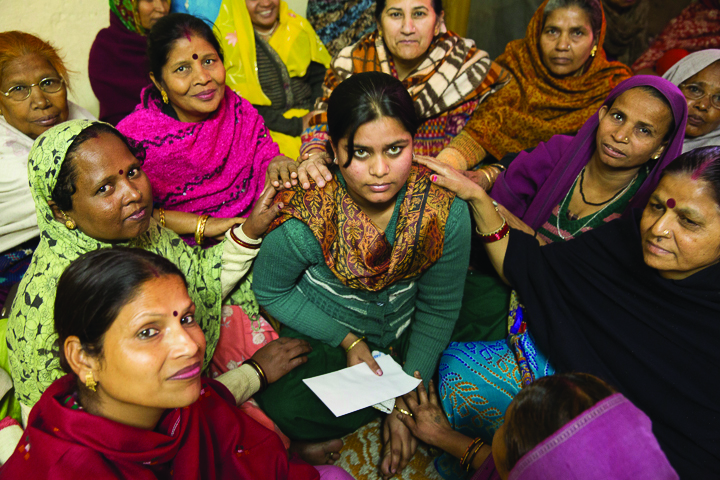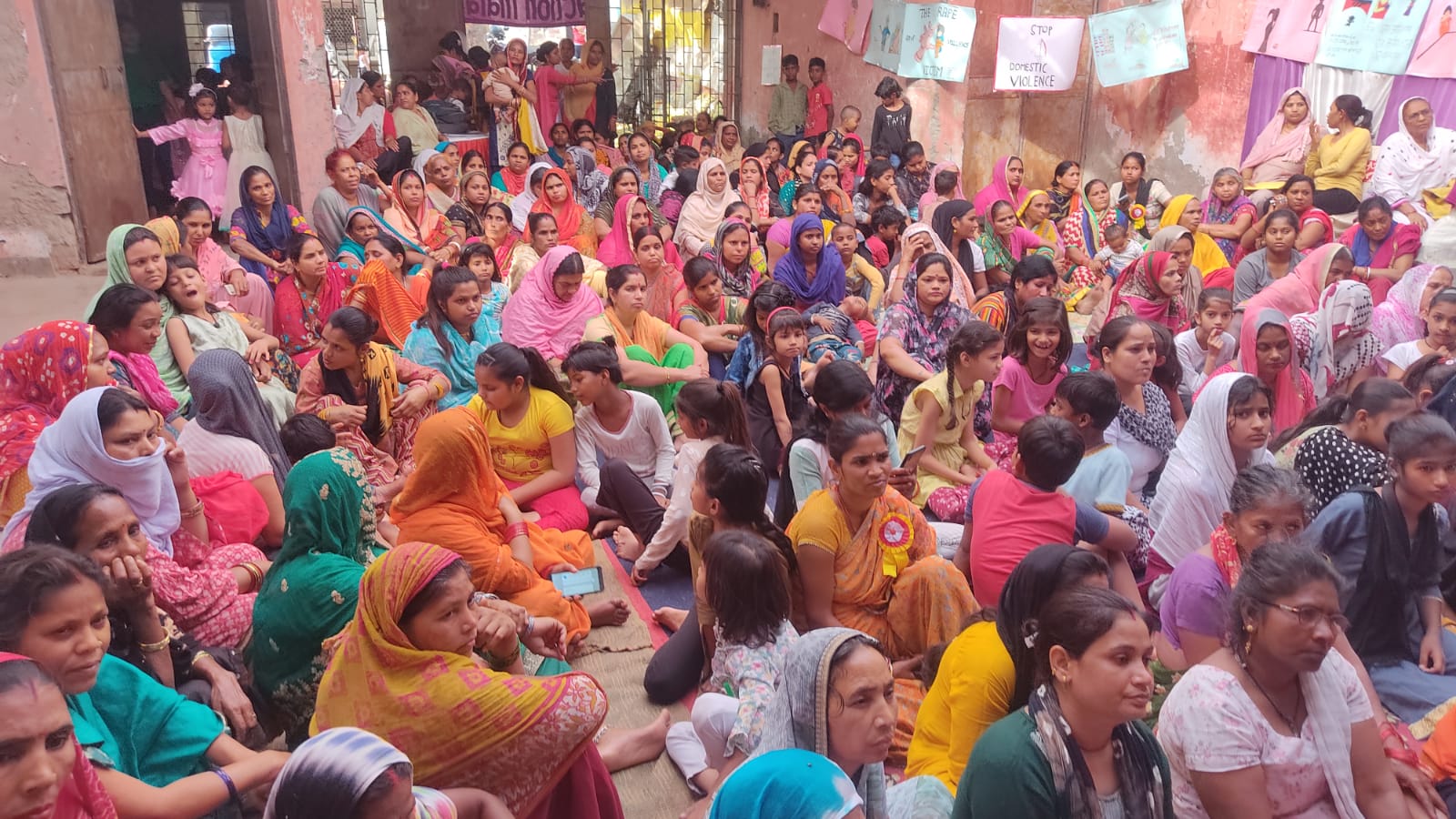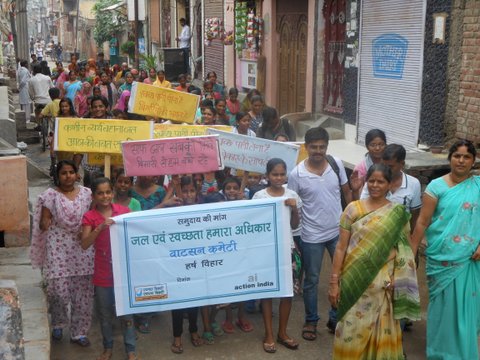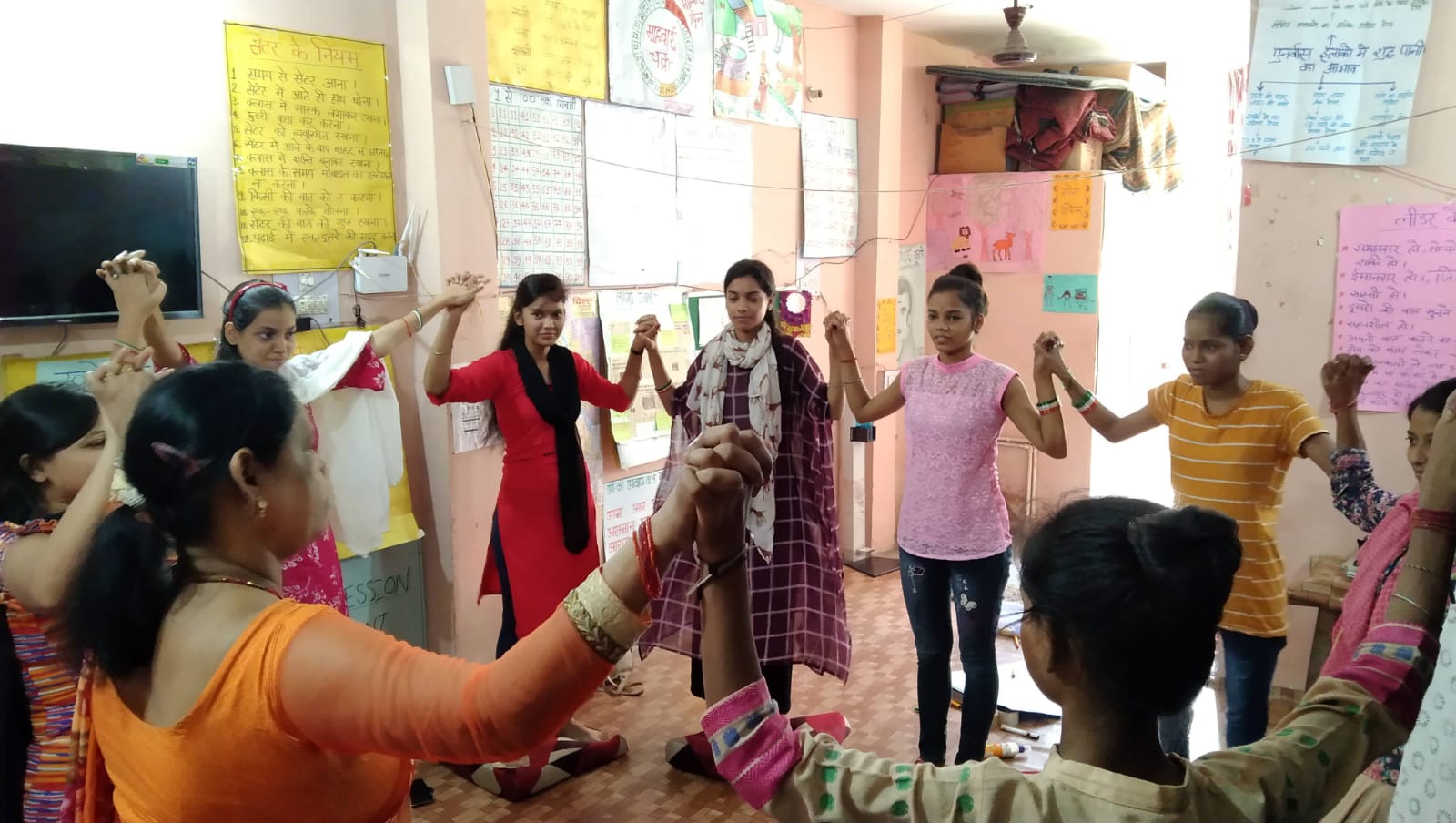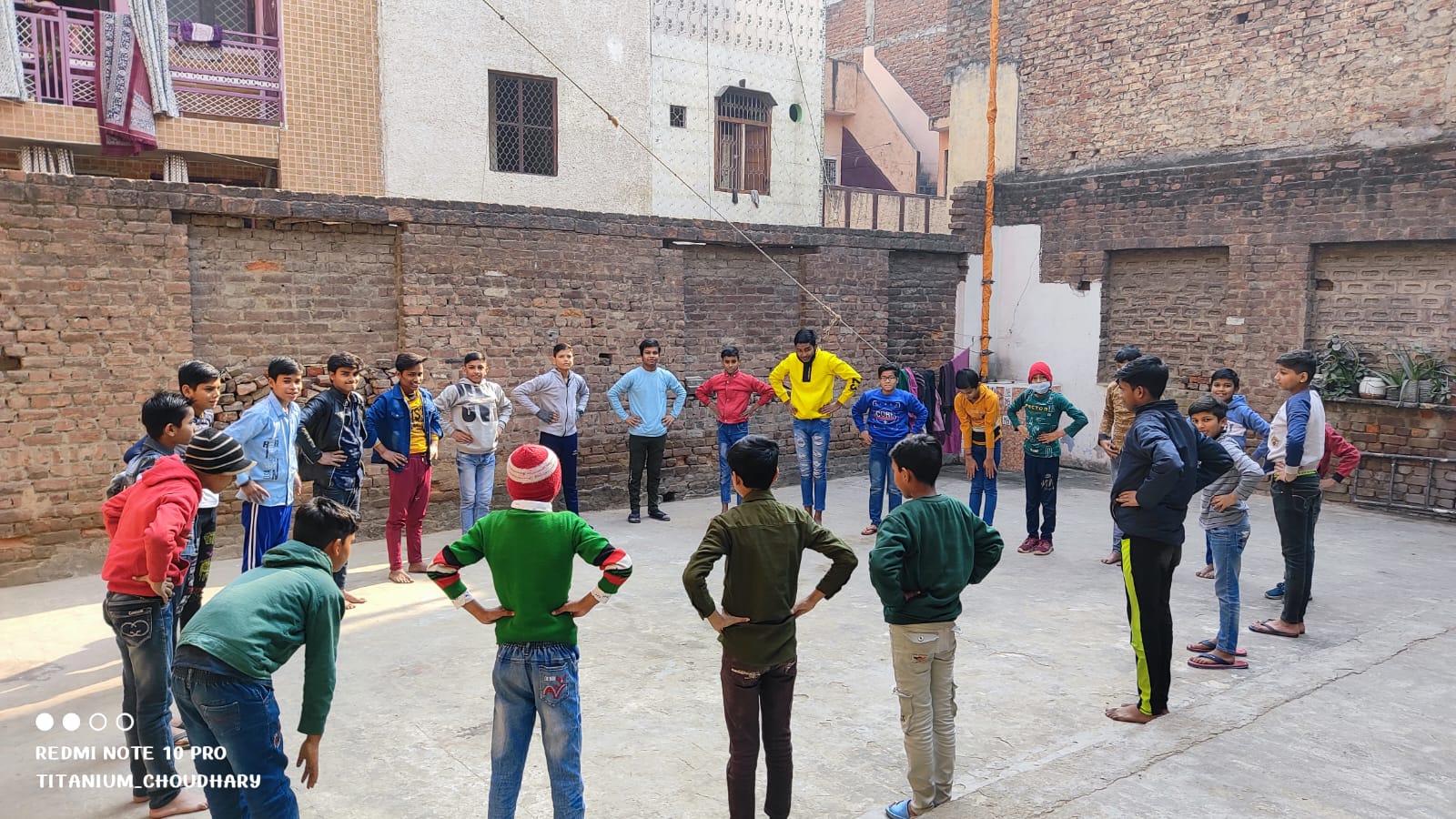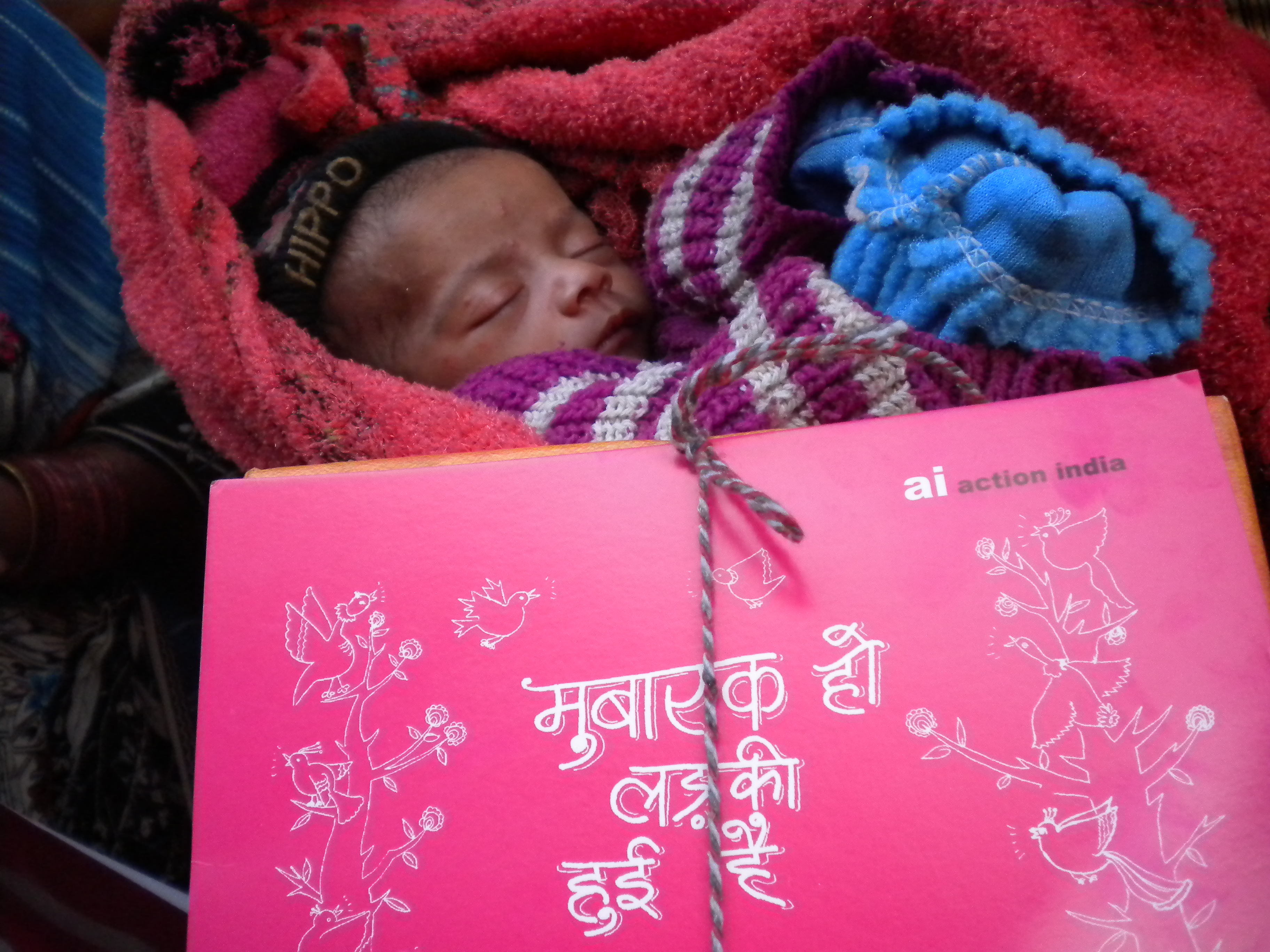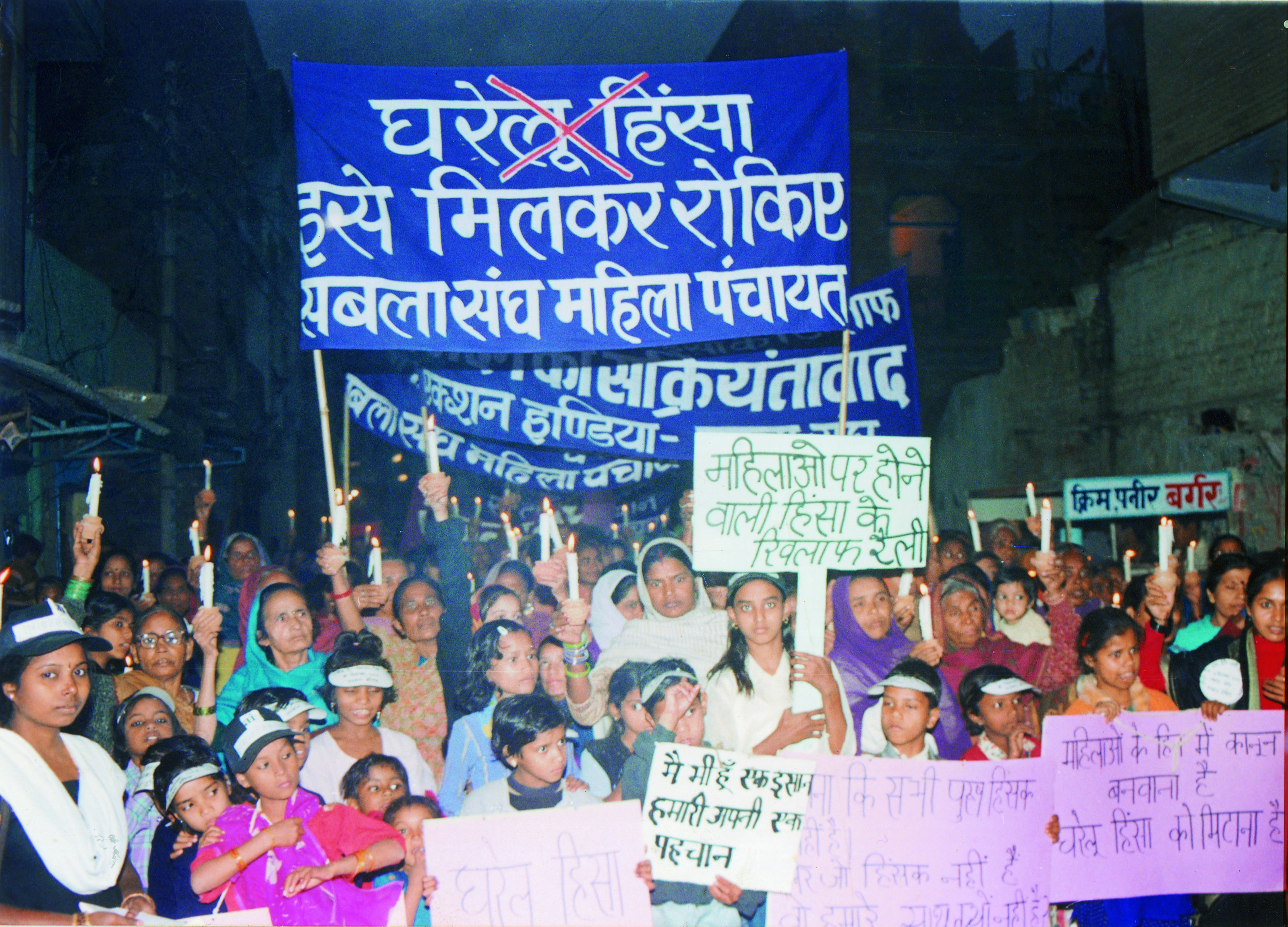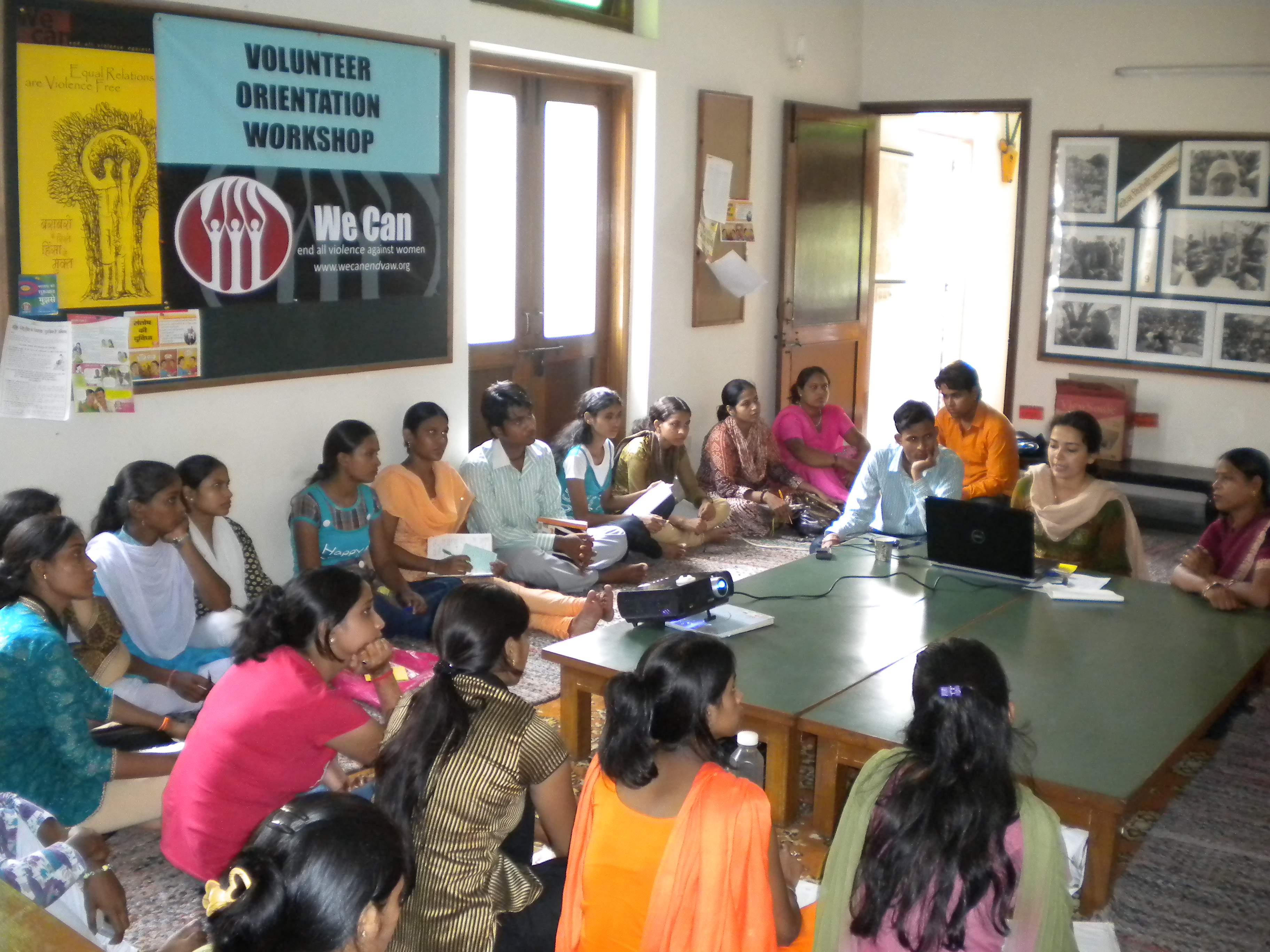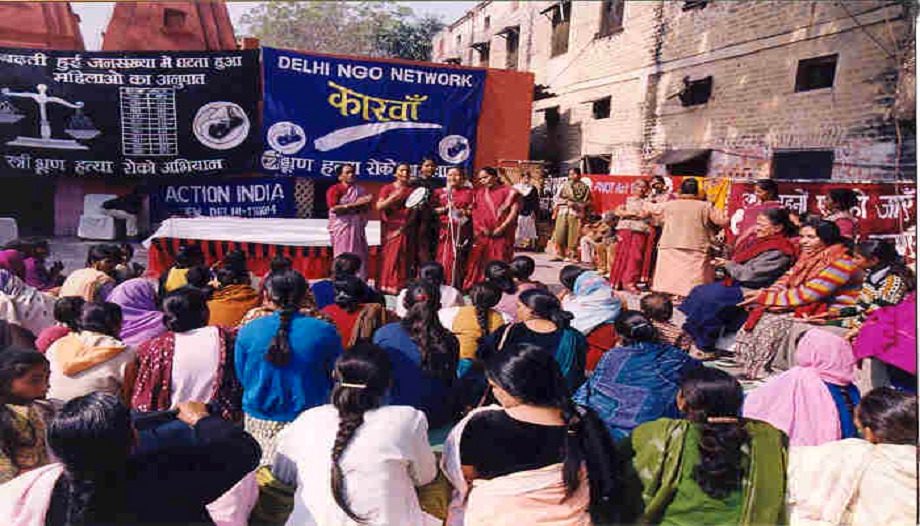
Karvan - Save the Girl Child Campaign
The DCW, while bringing together diverse groups of NGOs and CBOs provided us an opportunity to initiate a campaign network against violence against women, which was subsequently named KARVAN. The first campaign taken up by Karvan was on the dissemination of the PNDT Act to implement the Supreme Court Order passed in 2001 taking the Health Administration to task. This opened up new channels for networking to initiate the campaign against female foeticide on the findings of the census of 2001 which highlighted the fall in the birth of girls in the 0-6 age group in the last decade. The introduction of gender selection technology before conception was now threatening to further imbalance the gap in the sex ratio. A statewide Campaign was carried out at the grassroot level questioning the deep-rooted values of son preference which lay at the root of the problem.
Pre-Conception Pre Natal-Diagnostic Test Act, 1994 (PCPNDT)
Members of the Mahila Panchayat act as community watch as the Nari Shakti Vahini. They actively support pregnant women in the community, who face pressure from their families and society for a male child and compel the bahu (daughter-in-law) to go for an ultrasound/sex selection. An interesting dialogue between mother-in-law and daughter-in-law “saas bahu vartalap” was attempted to discuss and debate the issue, enabling women to create a non-patriarchal space to assert their point of view.
Simultaneously, implementation of the PCPNDT Act was being attempted by focusing on the Appropriate Authorities to take responsibility to stop sex selective abortions and enforce the ban on sex detection in ultrasound clinics. Networking and dissemination played a crucial role in taking the law to the people, changing attitudes to bring about a change of mindset. Action India’s strategy was to create public opinion in the community, in the family, the medical profession and the media to ensure compliance to the PCPNDT Act.
The PNDT Act (Prenatal Diagnostic Testing Act) was passed in 1994 to stop sex selection at the foetal stage. The law remained unnoticed till the Supreme Court in Sept 2000 passed an order to ban the misuse of ultrasound and MTP to kill the female foetus in the womb. “Son preference” is one of the root causes of our declining sex ratio. The disappearing girl child in the 90s decade will create major imbalance between men and women in the years to come. Because the problem is deeprooted it must be addressed at many levels.

